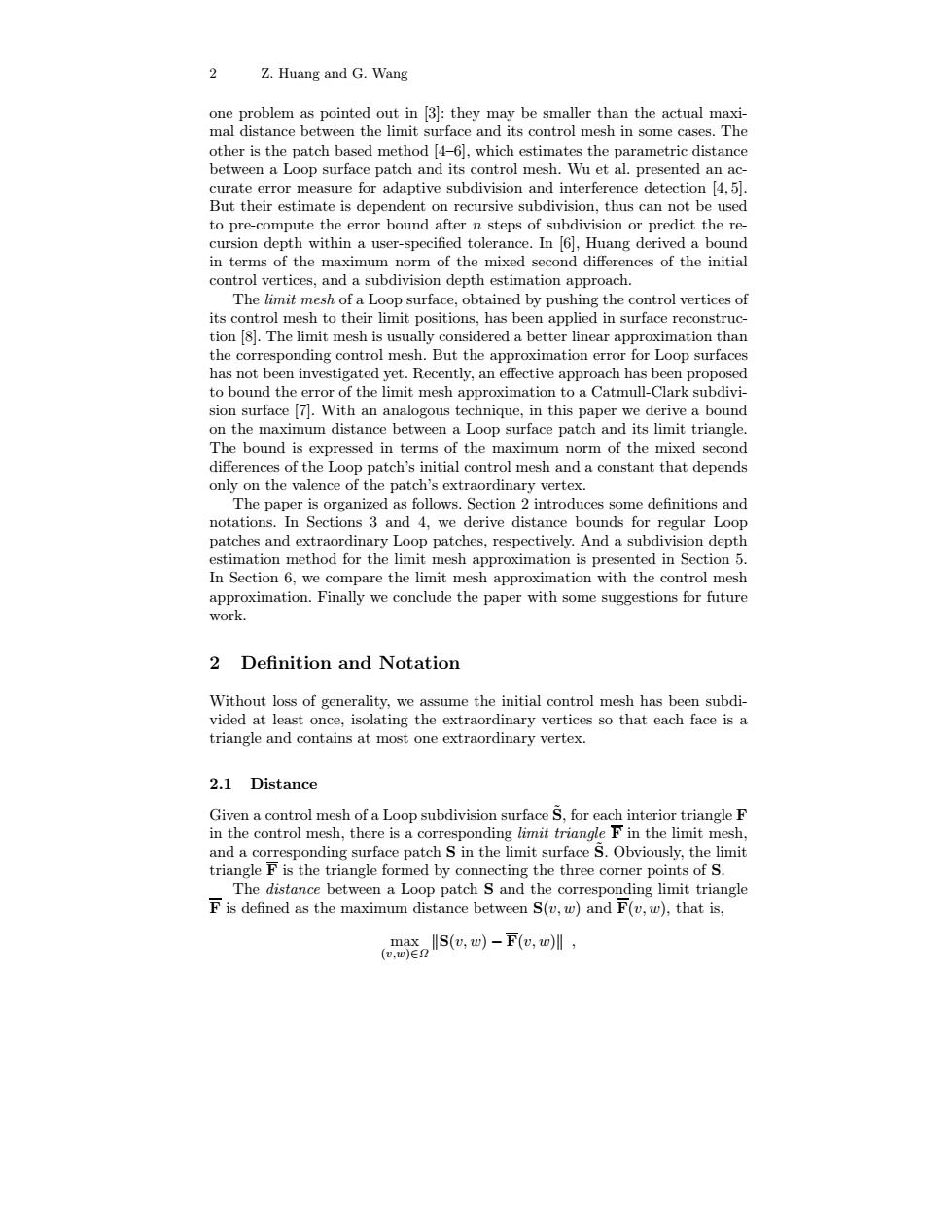正在加载图片...

2 r be of the patch's d in 5e 2 Definition and Notation the initis 2.1 Distane (.)-F(e.l 2 Z. Huang and G. Wang one problem as pointed out in [3]: they may be smaller than the actual maximal distance between the limit surface and its control mesh in some cases. The other is the patch based method [4–6], which estimates the parametric distance between a Loop surface patch and its control mesh. Wu et al. presented an accurate error measure for adaptive subdivision and interference detection [4, 5]. But their estimate is dependent on recursive subdivision, thus can not be used to pre-compute the error bound after n steps of subdivision or predict the recursion depth within a user-specified tolerance. In [6], Huang derived a bound in terms of the maximum norm of the mixed second differences of the initial control vertices, and a subdivision depth estimation approach. The limit mesh of a Loop surface, obtained by pushing the control vertices of its control mesh to their limit positions, has been applied in surface reconstruction [8]. The limit mesh is usually considered a better linear approximation than the corresponding control mesh. But the approximation error for Loop surfaces has not been investigated yet. Recently, an effective approach has been proposed to bound the error of the limit mesh approximation to a Catmull-Clark subdivision surface [7]. With an analogous technique, in this paper we derive a bound on the maximum distance between a Loop surface patch and its limit triangle. The bound is expressed in terms of the maximum norm of the mixed second differences of the Loop patch’s initial control mesh and a constant that depends only on the valence of the patch’s extraordinary vertex. The paper is organized as follows. Section 2 introduces some definitions and notations. In Sections 3 and 4, we derive distance bounds for regular Loop patches and extraordinary Loop patches, respectively. And a subdivision depth estimation method for the limit mesh approximation is presented in Section 5. In Section 6, we compare the limit mesh approximation with the control mesh approximation. Finally we conclude the paper with some suggestions for future work. 2 Definition and Notation Without loss of generality, we assume the initial control mesh has been subdivided at least once, isolating the extraordinary vertices so that each face is a triangle and contains at most one extraordinary vertex. 2.1 Distance Given a control mesh of a Loop subdivision surface S˜, for each interior triangle F in the control mesh, there is a corresponding limit triangle F in the limit mesh, and a corresponding surface patch S in the limit surface S˜. Obviously, the limit triangle F is the triangle formed by connecting the three corner points of S. The distance between a Loop patch S and the corresponding limit triangle F is defined as the maximum distance between S(v, w) and F(v, w), that is, max (v,w)∈Ω kS(v, w) − F(v, w)k